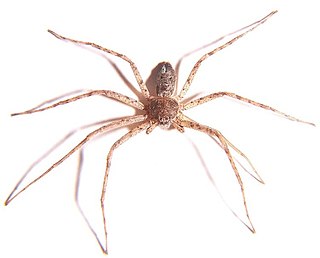
Philodromidae, also known as philodromid crab spiders and running crab spiders, is a family of araneomorph spiders first described by Tord Tamerlan Teodor Thorell in 1870. It contains over 600 species in thirty genera. Most are dull colored- brown, gray, yellowish or mottled with a leaf-like cardiac mark on the anterior dorsal abdomen, and seldom reach above 10 millimetres (0.39 in) long. None of the species build webs, but they do use silk for draglines and egg sacs.

Wandering spiders (Ctenidae) are a family of spiders that includes the Brazilian wandering spiders. These spiders have a distinctive longitudinal groove on the top-rear of their oval carapace similar to those of the Amaurobiidae. They are highly defensive and venomous nocturnal hunters. Despite their notoriety for being dangerous, only a few members of Phoneutria have venom known to be hazardous to humans, but the venoms of this family are poorly known, so all larger ctenids should be treated with caution.
Aysha is a genus of anyphaenid sac spiders first described by Eugen von Keyserling in 1891. They are often called "sac spiders" because of the dwellings that they create for themselves to take shelter in. As is true with most other spiders, the pedipalps of the males are much larger than those of the females. They are found throughout South America up to Panama.

Breda is a genus of jumping spiders that was first described by George Peckham & Elizabeth Peckham in 1894.
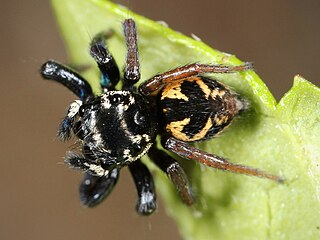
Corythalia is a genus of jumping spiders that was first described by Carl Ludwig Koch in 1850.
Gastromicans is a genus of jumping spiders that was first described by Cândido Firmino de Mello-Leitão in 1917.
Mirandia is a monotypic genus of Paraguayan jumping spiders containing the single species, Mirandia australis. It was first described by H. D. Badcock in 1932, and is only found in Paraguay.
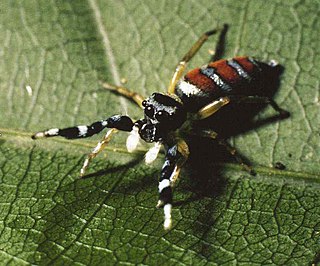
Psecas is a genus of jumping spiders that was first described by Carl Ludwig Koch in 1850.

Castianeira is a genus of ant-like corinnid sac spiders first described by Eugen von Keyserling in 1879. They are found in Eurasia, Africa, and the Americas, but are absent from Australia. Twenty-six species are native to North America, and at least twice as many are native to Mexico and Central America.
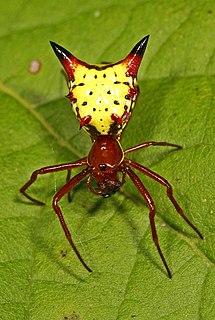
Micrathena, known as spiny orbweavers, is a genus of orb-weaver spiders first described by Carl Jakob Sundevall in 1833. Micrathena contains more than a hundred species, most of them Neotropical woodland-dwelling species. The name is derived from the Greek "micro", meaning "small", and the goddess Athena.

Diplura is a genus of South American curtain web spiders that was first described by C. L. Koch in 1850. It is found in South America and Cuba belonging to the subfamily Diplurinae. They possess a lyra on their prolateral maxillae. Diplura species can be distinguished from Trechona sp. by the number of setae on this lyra. They differ from Harmonicon sp. by the leg formula and the shape of the lyra bristles.
Teudis is a genus of anyphaenid sac spiders first described by O. Pickard-Cambridge in 1896.
Xiruana is a genus of South American anyphaenid sac spiders first described by Antônio Brescovit in 1997.
Wagneriana is a genus of orb-weaver spiders first described by F. O. Pickard-Cambridge in 1904.

Polybetes is a genus of South American huntsman spiders that was first described by Eugène Louis Simon in 1897. It is a senior synonym of Leptosparassus and Streptaedoea.
Otiothops is a genus of palp-footed spiders that was first described by W. S. MacLeay in 1839.
Cleocnemis is a genus of South American running crab spiders that was first described by Eugène Louis Simon in 1886.
Gephyrina is a genus of running crab spiders that was first described by Eugène Louis Simon in 1895.
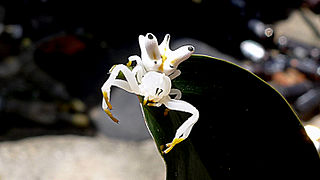
Epicadus is a genus of crab spiders first described by Eugène Simon in 1895. It is considered a senior synonym of Tobias.

Trachelopachys is a genus of South American araneomorph spiders first described by Eugène Simon in 1897. Originally placed with the Corinnidae, it was moved to the Trachelidae in 2014.










